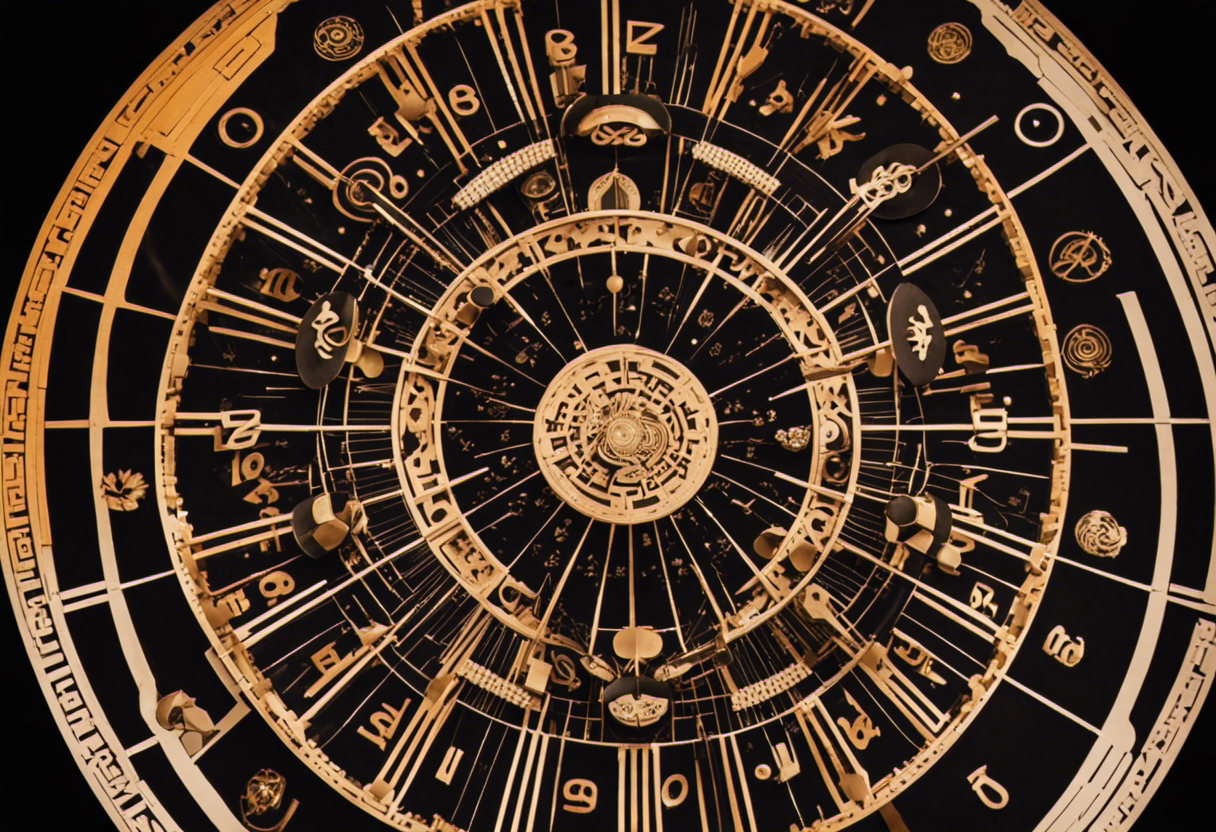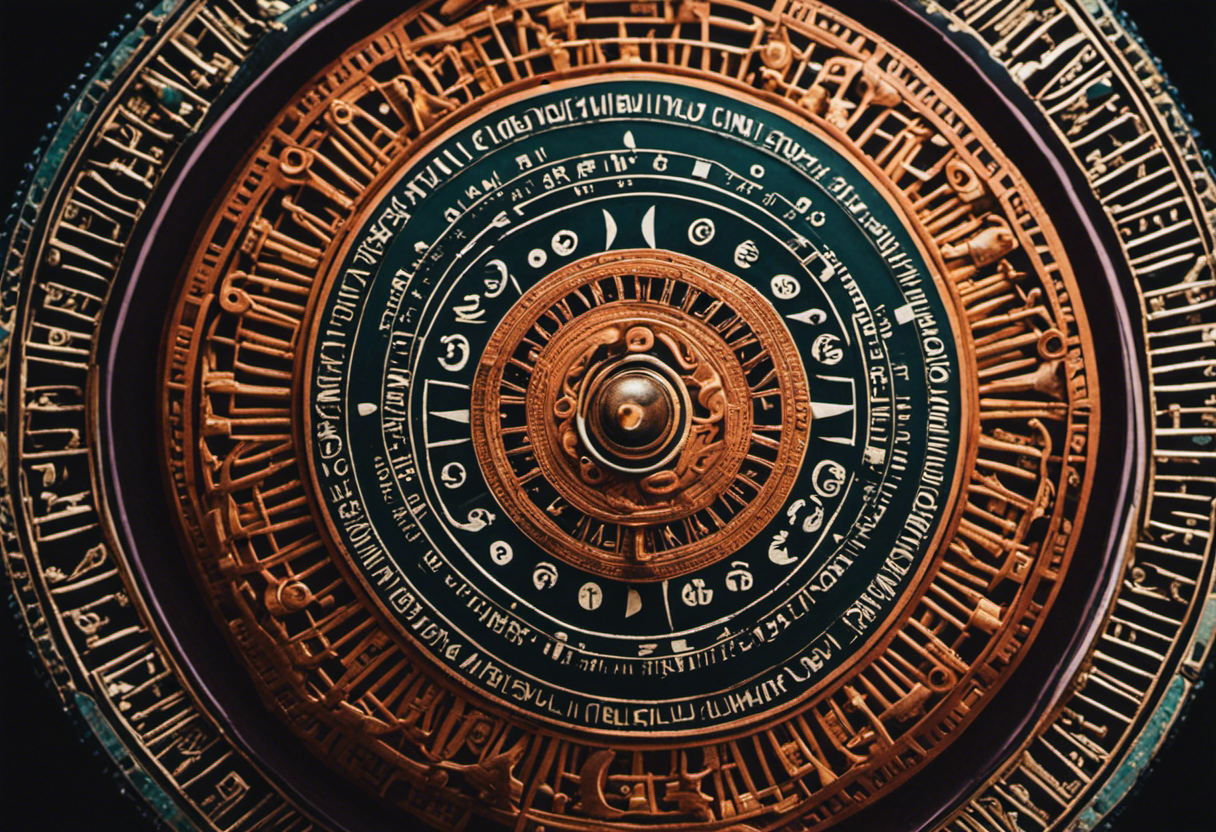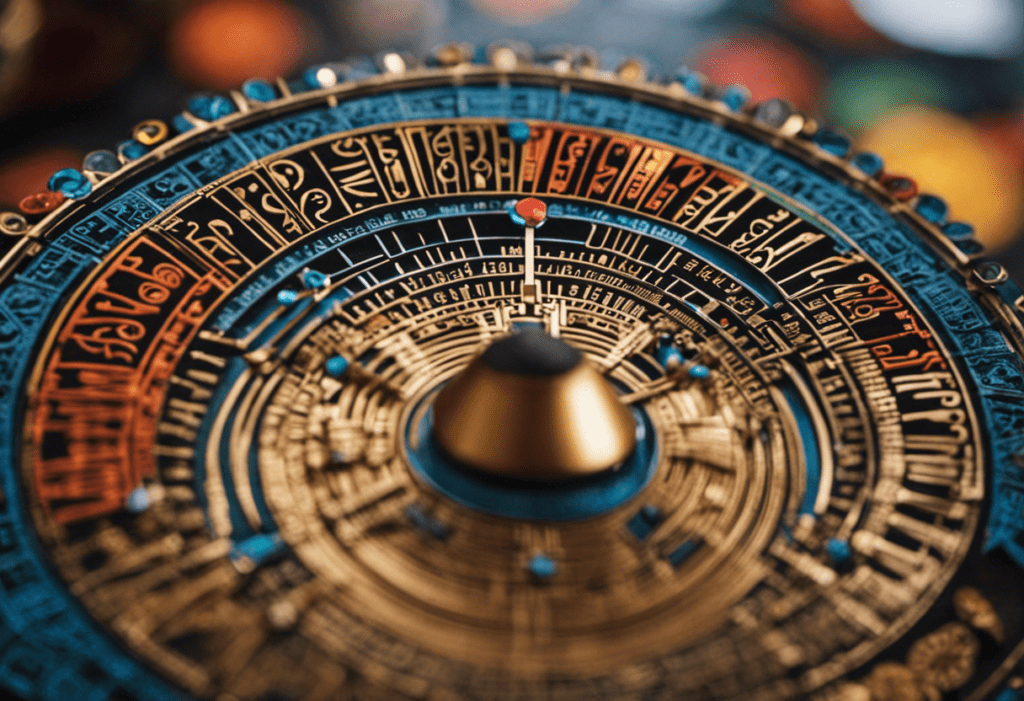In the vast tapestry of African culture, the Zulu calendar stands as a remarkable testament to the ancient wisdom and rich traditions of the Zulu people.
Like a finely woven fabric, the calendar weaves together history, spirituality, and daily life in a harmonious symphony.
Its origins can be traced back to a time when the celestial bodies guided the rhythms of existence.
This article explores the intricate structure and significance of the Zulu calendar, shedding light on its symbols, meanings, and deep-rooted spiritual beliefs.
Key Takeaways
- The Zulu Calendar traces its origins back to indigenous cultures of Southern Africa.
- The calendar reflects the close connection between the Zulu people and the natural world.
- It provides a framework for celebrating and honoring customs and rituals.
- The calendar ensures adherence to traditional customs and beliefs.
The Ancient Roots of the Zulu Calendar


As we delve into the history of the Zulu Calendar, it becomes evident that its ancient roots can be traced back to the indigenous cultures of Southern Africa. The Zulu people have a rich heritage of cultural traditions, and their calendar is no exception. The Zulu Calendar is deeply influenced by the lunar cycles, reflecting the close connection between the Zulu people and the natural world.
The Zulu people, who are primarily found in South Africa, have long relied on the lunar cycles to track time and organize their daily activities. The lunar cycles serve as a guide for various aspects of Zulu life, including planting and harvesting crops, conducting ceremonies, and even predicting the weather. The observation of the moon’s phases allows the Zulu people to align their activities with the rhythms of nature, ensuring a harmonious coexistence with the environment.
The Zulu Calendar is structured around the lunar month, which consists of approximately 29.5 days. Each lunar month is further divided into smaller units of time, such as weeks and days. These divisions are marked by specific cultural events and rituals, serving as a reminder of the Zulu people’s deep connection to their ancestral traditions.
The Cultural Significance of the Zulu Calendar


The Cultural Significance of the Zulu Calendar lies in its ability to preserve and transmit indigenous knowledge and traditions. The Zulu people have a rich cultural heritage that is deeply rooted in their historical and spiritual practices. The calendar serves as a tool for organizing and understanding important cultural events, rituals, and ceremonies.
One of the key aspects of the Zulu Calendar is its role in preserving cultural traditions. It provides a framework for the Zulu people to celebrate and honor their customs and rituals. For example, the calendar marks important festivals such as the First Fruits Ceremony, which is a significant event in Zulu culture. This ceremony is a way of giving thanks to the ancestors for the harvest and ensuring future prosperity.
Furthermore, the Zulu Calendar plays a vital role in guiding ceremonial practices. It helps the Zulu community determine the appropriate timing for various rituals and ceremonies. These ceremonies can range from birth and initiation rites to marriage ceremonies and ancestral worship. The calendar ensures that these important events are conducted at the right time, according to traditional customs and beliefs.
The Unique Structure of the Zulu Calendar


A notable characteristic of the Zulu Calendar is its intricate and elaborate structure, which comprises various interconnecting elements and divisions. This unique structure allows for the organization and observation of important dates, rituals, and festivals within the Zulu community.
Here are three key aspects that contribute to the distinctiveness of the Zulu Calendar:
- Lunar-based system: The Zulu Calendar follows a lunar-based system, with each month corresponding to a specific phase of the moon. This lunar alignment is significant as it helps determine the timing of various agricultural activities, such as planting and harvesting, which are vital to the Zulu way of life.
- Division of the year: The Zulu Calendar divides the year into two main seasons – the hot, rainy season known as ‘isibhaca’ and the dry, cooler season called ‘umkhumbi.’ These divisions align with the agricultural cycle and guide the community in planning their activities accordingly.
- Ritual and festival observances: The structure of the Zulu Calendar also incorporates the observance of important rituals and festivals. These events, such as the Reed Dance ceremony or the First Fruits Festival, hold significant cultural and spiritual importance for the Zulu people. They are celebrated at specific times of the year as designated by the Zulu Calendar, ensuring that these traditions are upheld and honored.
Exploring the Symbols and Meanings in the Zulu Calendar


Symbols and meanings play a significant role in the Zulu Calendar, providing a deeper understanding of the cultural and spiritual significance of the dates and events it encompasses. The Zulu calendar is rich in symbolism, with each month, day, and even hour represented by specific symbols that hold particular meanings. These symbols are deeply rooted in Zulu traditions, beliefs, and folklore, reflecting the ancestral wisdom and spiritual connection of the Zulu people.
One of the key symbols in the Zulu calendar is the sun, which represents life and vitality. It is often associated with new beginnings and the start of a new cycle. The moon, on the other hand, symbolizes femininity, fertility, and the cyclical nature of time. It is closely linked to the menstrual cycle of women and the tides.
Other symbols in the Zulu calendar include animals, plants, and natural phenomena, such as rain, thunder, and lightning. Each symbol carries its own meaning and is interpreted based on its context and the specific date or event it represents. For example, the symbol of a lion may signify strength and leadership, while a snake may represent transformation and healing.
Interpreting these symbols requires a deep understanding of Zulu culture and traditions. It involves considering the historical, social, and spiritual context in which the Zulu calendar was developed. By exploring these symbols and their meanings, we gain insight into the Zulu worldview, their relationship with nature, and their spiritual beliefs.
The Spiritual Beliefs Embedded in the Zulu Calendar


Embedded within the Zulu Calendar are spiritual beliefs that shape the way the Zulu people perceive time and engage with the world around them. These spiritual practices and beliefs are deeply rooted in ancestral worship, which is a cornerstone of Zulu culture.
Here are three key aspects of the spiritual beliefs embedded in the Zulu calendar:
- Ancestral worship: The Zulu people believe in the presence and influence of their ancestors in their daily lives. They honor and communicate with their ancestors through rituals and ceremonies. The Zulu calendar incorporates specific dates for ancestral worship, where offerings and prayers are made to ensure the well-being and guidance of the community.
- Divination: Divination plays a significant role in the Zulu spiritual practices. Diviners, known as ‘sangomas,’ are highly respected individuals who have the ability to communicate with the spiritual realm. Traditional divination methods, such as bone throwing or interpreting dreams, are used to seek guidance and insight into various aspects of life, including health, relationships, and future events.
- Rituals and ceremonies: The Zulu calendar includes a range of rituals and ceremonies that are performed at specific times throughout the year. These rituals are believed to connect the Zulu people with their ancestors and the spiritual forces of the universe. They serve as a way to express gratitude, seek blessings, and maintain harmony with the spiritual realm.
The spiritual beliefs embedded within the Zulu calendar are an integral part of Zulu culture, guiding their perception of time and their interaction with the world around them. They provide a sense of continuity, identity, and connection to the ancestral heritage that is deeply cherished by the Zulu people.
Conclusion
In conclusion, the Zulu calendar, with its ancient roots and unique structure, holds great cultural significance.
Through exploring the symbols and meanings within the calendar, we gain insight into the spiritual beliefs of the Zulu people.
The calendar serves as a powerful tool for understanding their history and traditions.
Like a key unlocking the door to their cultural heritage, the Zulu calendar invites us to delve deeper into the rich tapestry of their ancient civilization.




